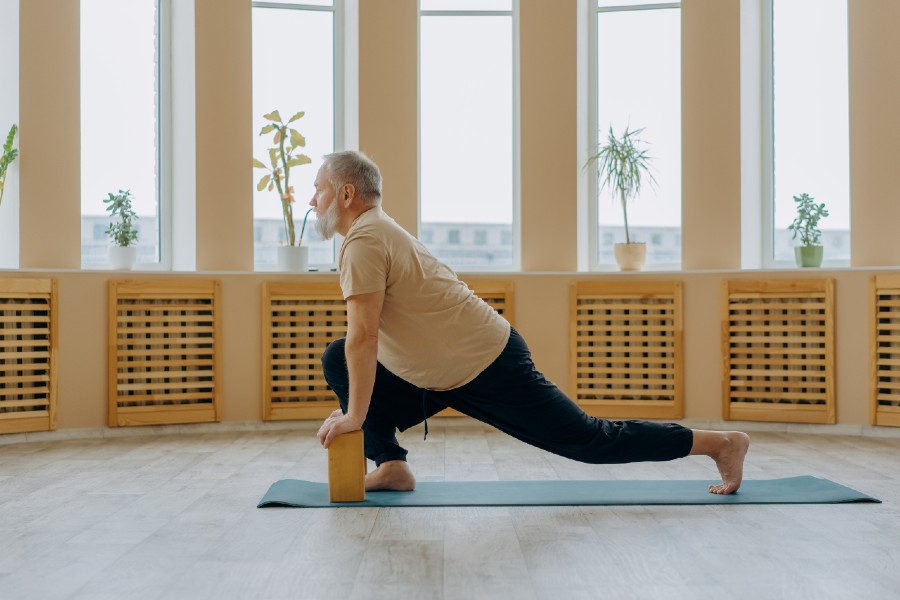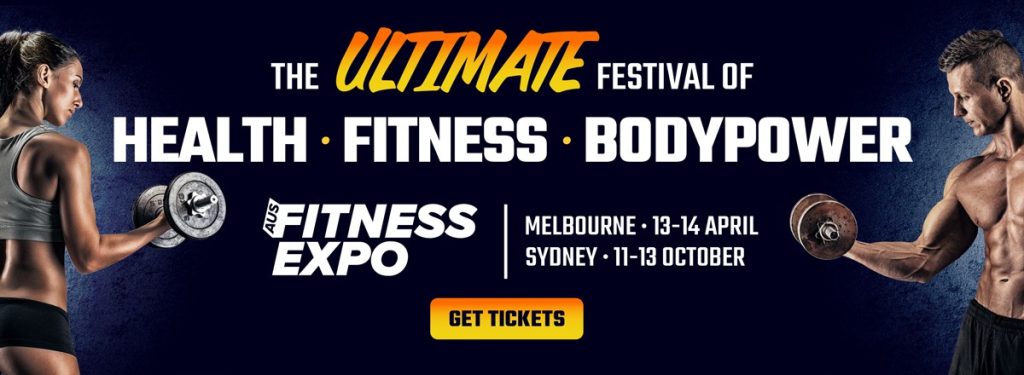Yoga blocks serve as an excellent prop for beginner yogis by helping them feel supported and confident in their abilities. They make yoga more accessible to everyone, by accommodating different body types, physical capabilities, and limitations.
By providing a stable base of support, yoga blocks help beginners maintain proper alignment and balance during asanas (yoga positions). They aid in deepening stretches and modifying poses to accommodate specific injuries and limitations, ultimately enhancing the overall yoga experience.
Using yoga blocks can also add variety and creativity to your practice. By exploring different ways to use blocks, you can discover new variations of familiar poses and incorporate them into your sequences.
How do yoga blocks help beginners?
Beginner yogis often struggle with various physical and emotional limitations, such as a lack of flexibility, muscular strength, spatial awareness, and their belief in their abilities to execute a pose correctly.
Yoga blocks offer support and stability during the initial stages of practice by building confidence, maintaining a safe and neutral alignment, and gradually developing the strength and flexibility required for advanced poses.

Photo by Mikhail Nilov
Yoga blocks create proper alignment and body awareness
Placing blocks strategically under specific body parts, such as the pelvis, back, or hands, allows practitioners to focus on proper form, engage the relevant muscles, and refine their technique without compromising safety.
For example, the correct use of yoga blocks can activate the core, align and lengthen the spine, and release muscle tension. By using blocks as props, you can feel a sense of being grounded and supported, allowing you to comfortably explore new ranges of motion without putting excessive strain on your joints and muscles.
Yoga blocks help enhance sensory awareness and proprioception by acting as a tangible and tactile tool during your sessions. The texture, weight, and support provided by the blocks encourage beginners to be fully present in their bodies, fostering a deeper connection to the physical sensations and emotional subtleties of their practice.
Yoga blocks make asanas easy to modify
Yoga blocks provide options to modify poses to suit your current capabilities. This allows beginners to comfortably engage in poses they may otherwise find difficult, encouraging them to explore and progress in their practice at their own pace.
If you have tight muscles or limited flexibility, yoga blocks can be used to ease into poses gradually. For instance, in seated forward folds, you can place a block on your thighs and rest your hands on it instead of reaching for your feet. This modification allows you to gradually work on opening up your hamstrings and lower back.
Yoga blocks enable safe progression in your practice
Yoga blocks provide a pathway for gradual progression, by bridging the gap between your current abilities and future goals. By utilising blocks, beginners can work within their current capabilities, respecting the body’s limits, and gradually improving flexibility while minimising the risk of injuries.
As you progress in your practice, you can continue using yoga blocks as tools to add or reduce the difficulty of a particular pose, include variations, and safely explore and expand your physical abilities.
How many yoga blocks should a beginner start with?
Although there are no specific rules regarding the number of yoga blocks one should incorporate into their practice, it’s helpful to start with two blocks. The added stability offered by two blocks can help put your mind at ease by making you feel more grounded, allowing you to solely focus on exploring the subtle nuances of the pose.
Using two blocks also adds an element of symmetry to your practice. Irrespective of how you’re using them, having a block for each side of the body promotes balanced alignment and thereby reduces the risk of strain or injury.
Additionally, by having two blocks at your disposal, you can stack them on top of each other, place them at different heights, or use them individually. This flexibility enables you to customise the support and height according to your specific needs as you progress.
Ultimately, the number of yoga blocks you choose as a beginner should be based on your circumstances, goals, and required comfort level. Remember that yoga blocks are tools that can be adjusted and modified to suit your evolving needs. As you deepen your practice and become more attuned to your body, you will gain a greater understanding of how many blocks best serve your journey toward balance, alignment, and self-discovery.
Things to consider when purchasing yoga blocks
When it comes to purchasing yoga blocks, there are a few key factors to consider to ensure you find the right fit for your practice.
Material and size
Yoga blocks are commonly made of materials like foam, cork, and wood. Foam blocks are comfortable to use, lightweight, affordable, and provide gentle cushioning. They are particularly useful during longer restorative stretches.
Cork blocks are more durable, and firm, and offer a natural texture for a secure grip, even when you’re palms are sweaty. They are also eco-friendly and made from natural materials. Wood blocks are sturdy, but tend to be heavier.
Consider whether you prioritise a firm grip or prefer a smoother surface to find a block that suits your needs. This will often be dictated by the type of yoga you wish to practice and the difficulty level of the individual asanas.
The standard size for a yoga block is 23 x 15 x 7.5 cm. This is the size most commonly used in studios and is versatile enough for use during a multitude of poses. However, you can also find smaller or larger blocks depending on your requirements.
If you have access to a yoga studio, you may consider using a few different sizes during your sessions to see which suits you best.
Durability and budget
Investing in high-quality yoga blocks is generally an indicator of their longevity and durability. Check the construction and overall quality of the blocks, ensuring they are sturdy and can withstand regular use. Since yoga blocks are versatile and can be used by beginners and advanced practitioners alike, choosing a high-quality block will serve as a constant companion as you progress in your practice.
The price range of yoga blocks varies depending on the material used and its quality. While higher-priced options may offer additional features, longevity, or premium materials, there are also budget-friendly alternatives available.

We recommend using Mobeco’s Luxury Cork Yoga Block for beginners. Made from premium eco-friendly material, these sustainable yoga blocks are designed to provide superior grip and stability, while adding a touch of luxury to your practice. If you’re looking for a sturdy and durable yoga block to assist in your practice, these easy-to-clean, hypoallergenic cork yoga blocks are sure to be a trusted companion for you, regardless of your current abilities.
Due to their adaptability and ease of use, yoga blocks can be a great addition to a beginner’s yoga practice. Although they are not mandatory, they often enable beginners to ease into their sessions, while allowing their bodies ample time to get used to the mechanics of the poses themselves.

Using the Evolt 360 Body Scanner to Get Members Through The Door
Are you looking for ways to get members to reconnect with you and motivate them to get back into their workout routines? The cost of living crisis is being felt across Australia, and gyms need to offer increased value to members for those membership fees to be justified in the next round of household spending

6 Tips for Preparing for Your First Fun Run
Article written by Ben Lucas, Director of Flow Athletic. Preparing for your first fun run can be both exciting and a little daunting. Whether you are brand new to running or simply setting yourself a new challenge in your running journey, preparation is key. Setting a solid foundation with good technique and training is vital

Supercharge your Strength with Unilateral Training
Unilateral training is an often-overlooked approach to fitness programming that can be a game-changer for your strength training goals. When you engage in unilateral strength training, you focus on training one limb at a time, instead of using both in tandem. Incorporating unilateral training in your fitness regimen can help correct muscle imbalances, create more

My Fit Pro: A Better Live Streaming Platform for Fitness Businesses
When Fiona McKenzie was struggling to find a good way to stream her dance fitness classes during the pandemic, she decided to take matters into her own hands. With a background in IT and a web developer for a husband, Fiona set about creating her own streaming platform, designed specifically for fitness professionals. This “little

The Run Rocket
Take your sprint training to the next level with the Run Rocket. Used by professional sporting teams around the world, the Run Rocket sprint trainer is the way to train athletes of all levels for peak performance, increased agility, and explosive power. What is the Run Rocket Sprint Trainer? Lower body strength and power is

Close the Gap: Expert Advice on Managing Diastasis Recti with Exercise
Diastasis recti is a common condition that occurs when the rectus abdominis muscles (the muscles that make up the six-pack) separate along the linea alba, the connective tissue that runs down the centre of the abdominal wall (1). This separation can lead to a bulge in the midline of the abdomen, a symptom sometimes referred

